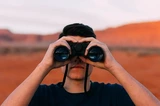
Students will practice conversing with each other and answering basic questions about themselves.
- Subject:
- Languages
- Material Type:
- Activity/Lab
- Author:
- Camille Daw
- Amber Hoye
- Date Added:
- 11/18/2020

Students will practice conversing with each other and answering basic questions about themselves.
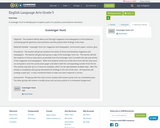
A Scavenger Hunt to identify parts of speech, parts of a sentence, and sentence mechanics.

In this engaging forensic scavenger hunt lesson, students step into the roles of junior detectives tasked with solving the mystery of a cookie jar missing from a teacher’s room. Equipped with essential forensic skills, including fingerprint analysis and conducting experiments like chromatography, students collaborate in teams to gather evidence from various stations strategically placed around the school. As they decipher clues and examine crime scenes, students hone their critical thinking abilities and scientific reasoning, ultimately piecing together the puzzle. This hands-on experience not only reinforces STEM principles but also fosters teamwork and problem-solving skills in an exciting and interactive learning environment.
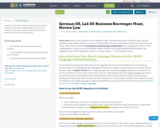
Students will receive business cards listing an address, profession and phone number. Based on the cards, students will practice asking each other questions to determine each other's information.

Students will research information using a variety of sources to answer questions for an Industrial Revolution Scavenger Hunt.

This resource includes the first of a 2-part activity designed to teach the concept and practice of gamification. Students are given a list of items to find and post a picture or video on a digital wall created by the teacher. The purpose of the lesson is to give students hands on experience of gamification. The activity is completely online
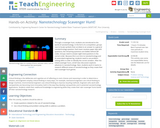
Through a scavenger hunt, students are introduced to the world of nanotechnology. In the form of a competition, groups race to locate symbols that correlate to an answer to a general nanotechnology question. Each team receives paper slips with questions; the remaining questions are hidden behind QR codes. Groups need to answer eight total questions in the correct order. Because this is an intro to nanotechnology and its associated engineering, students need to use problem-solving skills in order to identify the correct answers. After the initial scavenger hunt, a brief class discussion explores advances in nanotechnology. Next, students work in teams to research different areas of nanotechnology as they create their own scavenger hunt games.
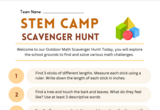
Embark on an educational adventure through the fascinating world of mathematics with our math-themed nature scavenger hunt lesson plan. Students will explore the outdoors, engaging in activities that integrate mathematical concepts such as shapes, patterns, and measurements found in nature. This interactive experience not only enhances their understanding of math but also cultivates a deeper appreciation for the natural environment. Through hands-on exploration and problem-solving, students will discover the beauty of mathematics all around them, making learning both enriching and enjoyable.
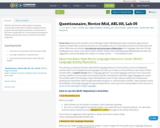
This lab will introduce ASL students to having conversations with others. Students will learn how to properly ask and answer questions, as well as how to feel more comfortable in a conversational atmosphere. Students will also learn how to describe each other's responses.


Engage students with more enjoyable vocabulary and introduction to a new chapter by having them complete a scavenger hunt. This tool is specifically designed for Algebra 1, chapter 1.

In this activity students will use an interactive Google Slideshow to choose different places around China to explore a mini trip to that place. Students will choose a location, and in that location they will choose an activity and food based on limited clues, allowing each choice to be a surprise and expose students to different experiences in China they might not have known about previously.

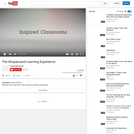
The wraparound learning experience is demonstrated by Sandi Silbernagel as she teaches her students about Cajun Tall Tales. Instructional expert Jim Knight discusses strategies and activities that can affect learning outcomes.